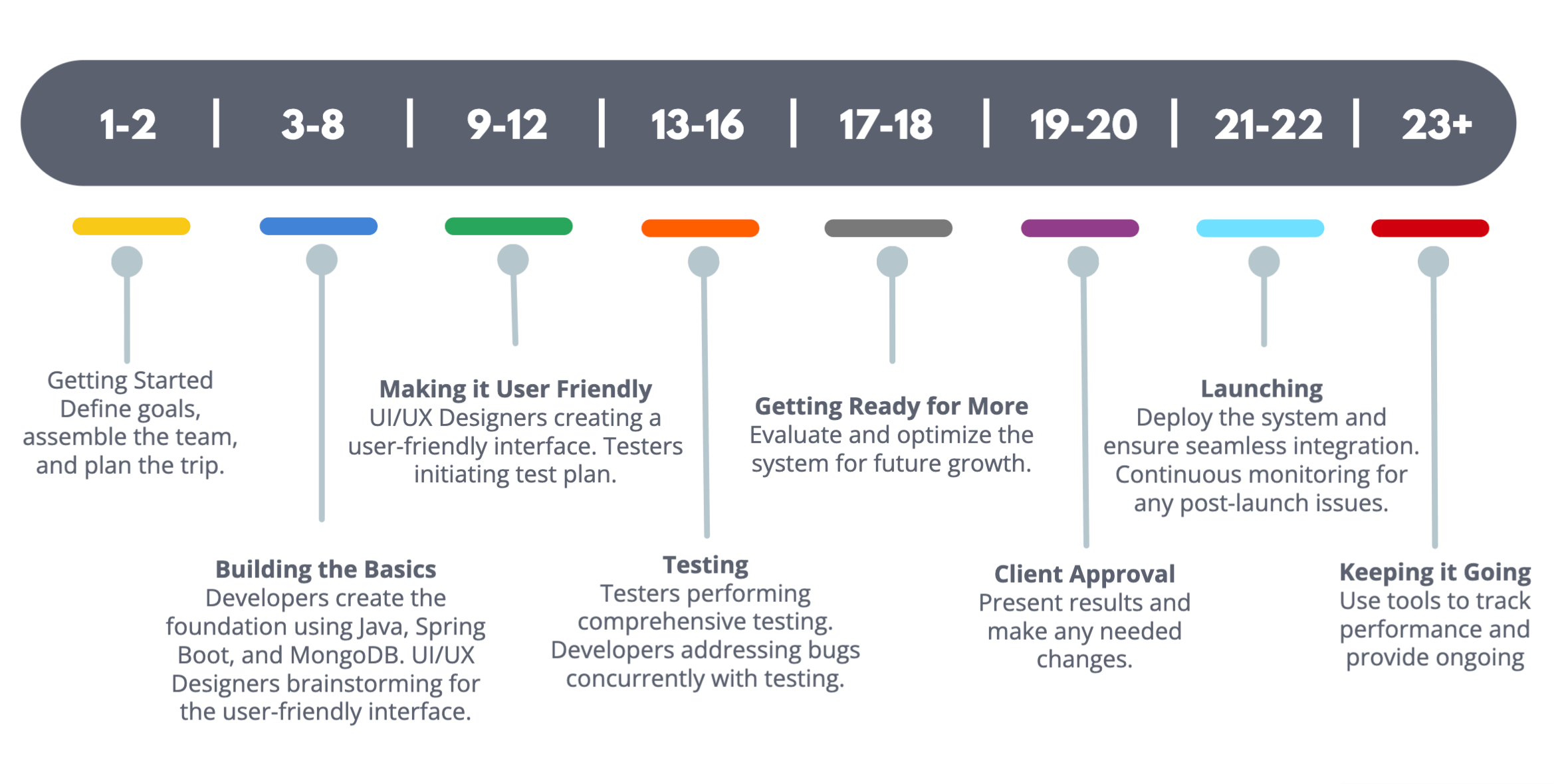In the intricate world of software development, successful project execution hinges on meticulous planning and resource allocation. Capacity planning, a strategic process, plays a pivotal role in ensuring that a project unfolds seamlessly, meeting both technical and business objectives. In this exploration, we delve into the art of capacity planning by applying it to a real-world use case—a credit card company’s effort to implement a real-time transaction alert system. By unraveling the intricacies of this project, we aim to showcase how capacity planning can be instrumental in steering software development initiatives towards efficiency, innovation, and customer-centric solutions. Let’s embark on this journey of strategic foresight and technical excellence.
The Significance of Capacity Planning
The primary objective of preparing capacity planning for a software development project is to optimize the efficient utilization of technical and human resources, ensuring they align with project goals, timelines, and budget constraints. This involves accurately estimating and provisioning computing resources to handle workload requirements, maintaining flexibility to adapt to changes, and controlling costs by avoiding over-provisioning or underutilization. The development process plays a crucial role in introducing the right resources at the right time, contributing to cost control and project efficiency. This strategic alignment of resources with the project’s evolving needs helps create a high-quality end product and harmonizes resource allocation with broader organizational objectives, ultimately contributing to the company’s strategic vision.
Unveiling the Use Case
Our credit card company envisions a transformative change—a real-time transaction alert system that empowers users with instant, personalized insights into their account activity. This cutting-edge system includes customizable thresholds, location-based alerts, and sophisticated fraud detection algorithms for enhanced security. Users can take immediate actions through interactive features, and seamless integration with financial apps ensures effortless management of credit card activity. With transaction categorization, expense insights, and comprehensive reporting, our vision is to provide a user-friendly solution for secure and efficient financial control.
Estimating Resources and Costs
The essence of effective capacity planning resides in the meticulous estimation of resources and costs. In our credit card project, our dream team—comprising two Backend Developers, a Frontend Developer, a Tester, a UI/UX Designer, an Architect and a Project Manager—plays a pivotal role, with their salaries and infrastructure costs being integral contributors to the overall budget. To optimize costs, we strategically embrace open-source technologies, including Java, Spring Boot, Angular, and MongoDB, demonstrating our commitment to technical excellence and fiscal responsibility. Furthermore, AWS serves as the robust cloud infrastructure, aligning seamlessly with our goal of achieving a balance between innovation and practicality while minimizing licensing expenses.
The Contingency Budget: Guarding Against Uncertainties
Reality often comes with uncertainties, and this is where the contingency budget steps in. Allocating 10% of the estimated costs serves as a safety net, ensuring that unforeseen challenges do not derail the project. In the volatile terrain of software development, having this financial cushion is a strategic move that aligns with the principles of capacity planning.
Scalability: Preparing for Future Growth
Our credit card company anticipates growth, and the real-time alert system must be ready to scale. Incorporating scalability into capacity planning means considering the potential increase in server costs as user demands surge. This forward-thinking approach not only ensures current success but lays the groundwork for future expansion.
The Timeline: Navigating Success with Precision

Note: Tentative timeline structured around a waterfall-based development process and in weeks.
The Budget: A Holistic View of Costs
In the end, the total budget reflects the culmination of resource estimates, infrastructure costs, contingency plans, and scalability considerations. For our credit card company, the investment in this real-time transaction alert system isn’t just a numerical figure; it’s a strategic allocation towards customer satisfaction, security, and innovation.
Numbers and Budget Breakdown
Resource Costs (Monthly):
- Project Manager salaries: $6,000 (1 Project Manager, Week 1: Full-time, Weeks 2-22: 20% capacity)
- Architect salaries: $8,000 (1 Architect, Week 2-3: Full-time)
- UI/UX Designer salaries: $5,000 (1 UI/UX Designer, Week 3-4: Full-time)
- Backend Developer salaries: $12,000 (2 Backend Developers, Week 3-22: Full-time)
- Frontend Developer salary: $6,000 (1 Frontend Developer, Week 5-22: Full-time)
- Tester salaries: $4,000 (1 Tester, Week 9-22: Full-time)
- Cloud hosting and database storage: $1,000
- 10% of the estimated costs (Contingency Budget): $11,750
Total Estimated Project Budget (Extrapolated):
- Project Duration: 22 weeks
- Total Estimated Budget: $130,000+
Note: The provided figures are approximate estimates, serving as rough benchmarks. For more precise and up-to-date salary information, it is recommended to verify the current market rates to ensure accuracy in financial projections. Alternative resources, including product owners and business analysts, may be incorporated as required.
Conclusion: Navigating Success with Capacity Planning
As we conclude our journey through capacity planning in the realm of software development, the real-world credit card use case exemplifies the meticulous balance between technical excellence and strategic foresight. Capacity planning, when executed thoughtfully, transforms uncertainties into opportunities, allowing software development projects to not only meet but exceed expectations. The journey doesn’t end with numbers and estimates; it culminates in the delivery of a solution that not only aligns with business goals but paves the way for future innovation. In the dynamic landscape of software development, mastering capacity planning is akin to holding the key to unlocking a world of possibilities.
